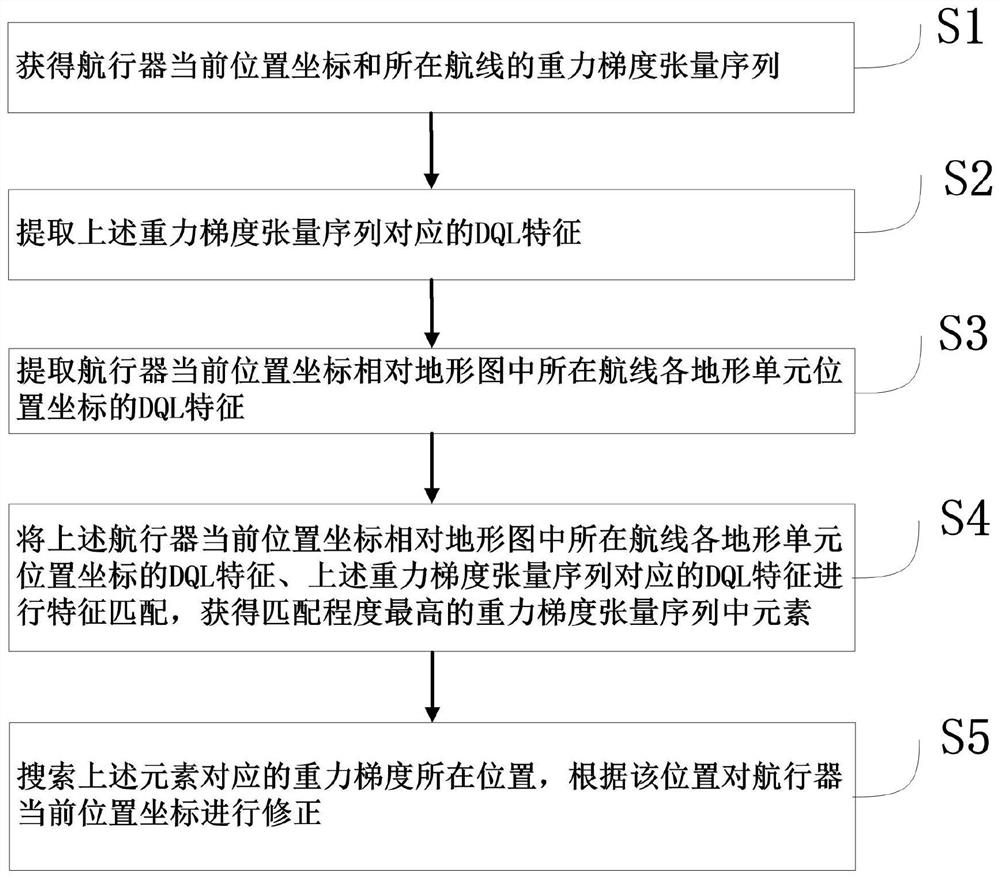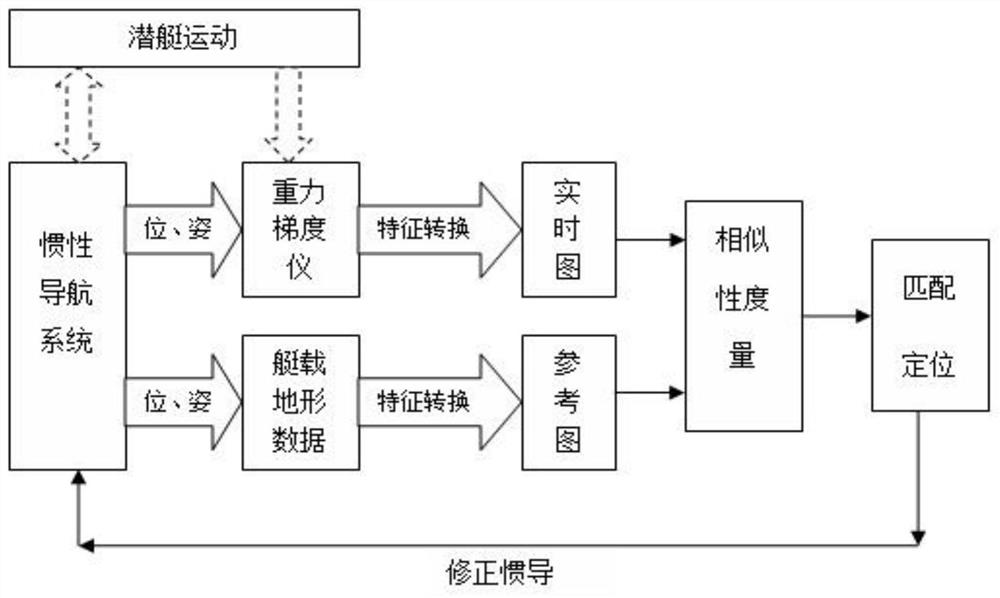Navigation and positioning method based on gravity gradient-terrain heterogenous data matching
A gravity gradient, navigation and positioning technology, applied in the field of navigation, can solve the problems of limited application range of gravity navigation and positioning accuracy, etc.
- Summary
- Abstract
- Description
- Claims
- Application Information
AI Technical Summary
Problems solved by technology
Method used
Image
Examples
Embodiment 1
[0073] A specific embodiment of the present invention discloses a navigation and positioning method based on gravity gradient-terrain heterogeneous data matching, such as figure 1 shown, including the following steps:
[0074] S1. Obtain the current position coordinates of the aircraft and the gravity gradient tensor sequence of the route; specifically, the aircraft is an aircraft or an underwater vehicle;
[0075] S2. Identify and extract the DQL features corresponding to the above gravity gradient tensor sequence;
[0076] S3. Extract the DQL feature of the current position coordinates of the aircraft relative to the position coordinates of each terrain unit of the route in the topographic map;
[0077] S4. Perform feature matching on the DQL features of the current position coordinates of the above-mentioned aircraft relative to the position coordinates of each terrain unit of the route in the topographic map, and the DQL features corresponding to the above-mentioned gravi...
Embodiment 2
[0082] Improve on the basis of the method in Embodiment 1, step S1, the gravity gradient tensor sequence of obtaining the current position coordinates of the aircraft and the route where it is located, further includes:
[0083] S11. Obtain the current position coordinates (x, y, z) of the aircraft through the measurement of the inertial navigation module;
[0084] S12. Obtain the gravity gradient tensor sequence (Γ 1 Γ 2 … Γ n ); where, each element Γ in the sequence i Contains 9 components, satisfying
[0085] Γ i =(Γ xx Γ yy Γ zz Γ xy Γ yz Γ zx Γ xz Γ zy Γ yx ) i
[0086] i=1 2... n, n≥3
[0087] (1)
[0088] Preferably, in step S2, the extraction of the DQL (DifferentialQuotient Logarithm, logarithmic scale difference space) feature corresponding to the gravity gradient tensor sequence further includes:
[0089] S21. For each element in the gravity gradient tensor sequence, filter out the repeated components of the element by the following formu...
PUM
 Login to View More
Login to View More Abstract
Description
Claims
Application Information
 Login to View More
Login to View More - R&D
- Intellectual Property
- Life Sciences
- Materials
- Tech Scout
- Unparalleled Data Quality
- Higher Quality Content
- 60% Fewer Hallucinations
Browse by: Latest US Patents, China's latest patents, Technical Efficacy Thesaurus, Application Domain, Technology Topic, Popular Technical Reports.
© 2025 PatSnap. All rights reserved.Legal|Privacy policy|Modern Slavery Act Transparency Statement|Sitemap|About US| Contact US: help@patsnap.com



